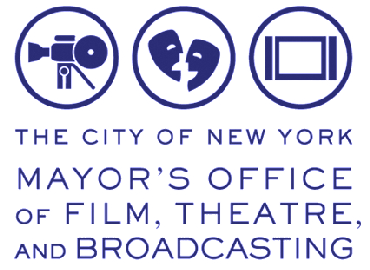
 Mayor's Office of Media and Entertainment311
Mayor's Office of Media and Entertainment311 Search all NYC.gov websites
Search all NYC.gov websites
MOME Office History

Filming in New York City wasn't always as easy as it is today. In the 1960's, producers often required upwards of 50 permits to shoot their project, and gaining access to some of New York's most popular locations was tricky, at best. Producers were required to obtain a permit for every single day of production. The Department of Commerce and Industrial Development issued permits for filming, but producers were also required to receive approval from the Police Department, Highways Department and Traffic Department. If wires and cables were used, the permission of the Department of Water Supply, Gas and Electricity was needed, and if parks property were being used, additional permits were required. All of this red tape caused many filmmakers to take their production out of New York City.
In 1966, Mayor John Lindsay changed this process and gave the Department of Commerce the authority to issue a single permit for filming in City-owned locations and abolished the power of City officials to censor the content of films shot on public property, as long as they didn't pose a risk to the public or break the law. He appointed an aide to help the film industry negotiate for shooting at privately owned sites and established a police unit to control crowds during filming. He appointed an aide to help the film industry negotiate for shooting at privately owned sites and established a police unit to control crowds during filming.
In an open letter to the public, the Mayor explained the reasons for encouraging New York-based production. "Each additional feature film or commercial television show means additional jobs for New York residents," he wrote. "Additional jobs means a healthier economy. And a healthier economy means a healthier city."
The results were immediate and enormous. In 1966 alone, production in New York increased by 100 percent over the previous year, bringing an estimated additional $20 million to the City.
Mayor Abraham Beame added another dimension to Mayor Lindsay's initiatives with the creation of the Mayor's Advisory Council on Motion Pictures and Television in 1974. The Council's director, Walter Wood, quickly began recruiting investment in New York's production industry.
"New York is the most filmic city in the world," Wood told the New York Post in 1977. "You can't point your camera at anything in this city and come up with something dull and uninteresting. You can film anything in one or another of the five boroughs."

When the Office of Film, Theatre & Broadcasting was established, New York City became the first city in the world to offer one-stop permits and expedite requests from production companies seeking to use public locations. In 1993, Mayor David Dinkins elevated the office to cabinet status and appointed Richard Brick as its first Commissioner.
Now as a division of the Mayor's Office of Media and Entertainment (MOME), the Agency continues to market New York City as a prime location. MOME facilitates local production, provides premiere location services and liaises with business decision makers to grow New York's media industry. The Agency works closely with the Movie/TV Unit of the New York Police Department, a special team of officers who monitor scenes involving special stunts or uniformed officers, and ensure pedestrian safety.
As we celebrate 50 years as an Agency, New York City has grown to become one of the world's largest production centers, serving as host to film, television, commercial, musical and theatrical productions. Today there are more films and television series filmed in New York City than ever before, and the film and television industry contributes nearly $9 billion and over 130,000 jobs to New York City's economy.


